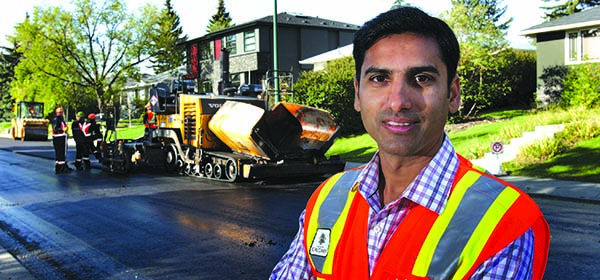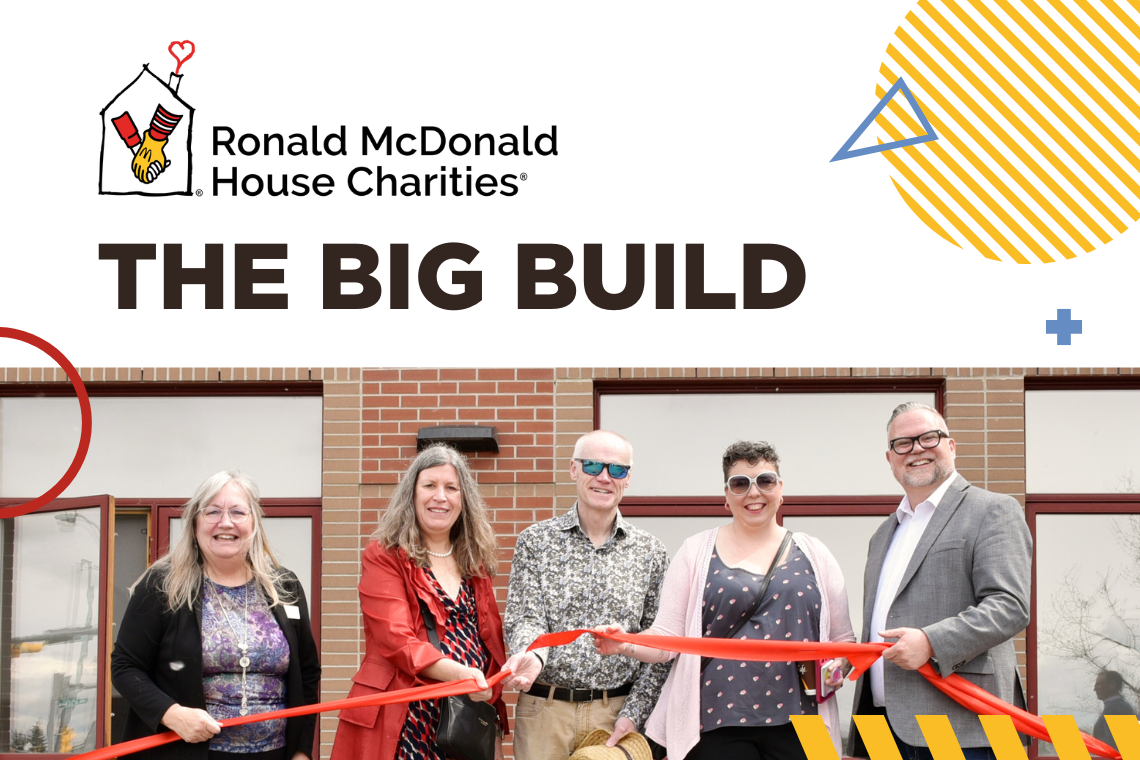
Venkat Lakkavalli, pavement engineer with the City of Calgary, beside a paving crew in the southwest community of Killarney. Photo by Wil Andruschak/for CREB®Now
Sept. 28, 2015 | CREBNow
Pounding the pavement
City of Calgary using new techniques in pavement construction, rehabilitationThe City of Calgary is going green in its effort to provide drivers with a bump-free commute.
The City's Transportation Department has completed testing two new environmentally friendly techniques in pavement construction and rehabilitation that use different techniques and alternative materials to create asphalt at a reduced cost.
Cold In-Place Recycling (CIR) is a seven-step process that produces a layer of pavement by cold-pressing reclaimed asphalt and mixing it with raw virgin materials such crushed stone, sand and gravel.
The technique reduces the pavement's life-cycle cost as well as minimizes the impact on the environment since less mineral aggregate needs to be removed.
Full Depth Reclamation (FDR), meanwhile, is similar to CIR. Yet instead of just recycling the top layer, base materials are also pulverized with a small percentage of mineral aggregate to make a stronger base.
"It's a greener and highly sustainable method for pavement rehabilitation," said City of Calgary pavement engineer Venkat Lakkavalli.
"The final product looks really good. It's smooth, safe and from an industry standpoint very cost effective."
Currently, Symons Valley Road N.W., 144th Avenue N.W. and Centre Street N. are the only roads that have been refreshed using the CIR and FDR methods. Lakkavalli said due to their more complicated processes, the City does not have plans to use either CIR or FDR on any other projects this year.
The City currently operates a recycled asphalt pavement eco-initiative wherein close to 100 per cent of asphalt reclaimed during roadwork is eventually re-used.
"Any time you see asphalt being removed during rehabilitation work, it's most likely going into our yards," said Lakkavalli.
"That material will then be stored, processed and used with new materials in other road rehabilitation. The city allows up to 20 per cent recycled materials in new asphalt mixes on roads."
Lakkavalli notes the City currently stores about 100,000 tonnes of material.
Meanwhile, the City is also focusing its sustainable efforts on a number of other infrastructure improvements, notably its water resources.
For the past several years, the City of Calgary's Water Services department has been looking at ways to manage resources in the face of fast-growing development, limited fresh-water supply and climate change.
One of the ways it's doing so is by implementing low-impact development and re-development pilot projects.
Low-impact development preserves or recreates natural landscape features to manage rainwater or snowmelt runoff. These projects include rain gardens, green roofs and absorbant landscapes, which can naturally treat storm water before it reaches the Bow and Elbow Rivers.
Rain gardens are already in place in Winston Heights and Bridgeland with a third one under construction in Oakridge.
Not only do the landscaped plant beds beautify a street or complex, they trap sediment, filter contaminants and reduce excessive runoff resulting in improved water quality, said Water Services spokeswoman Mary Ann Houston.
"Other benefits of a rain garden are that they attract birds, butterflies and beneficial insects, such as mosquito-consuming dragonflies," she said.
"Many of these projects are already implemented and more are being implemented right now. Because the projects are pilots, they are continually being evaluated and improvements made."
Tagged: Calgary Real Estate News | Environment | roads | sustainable | Transportation | water




